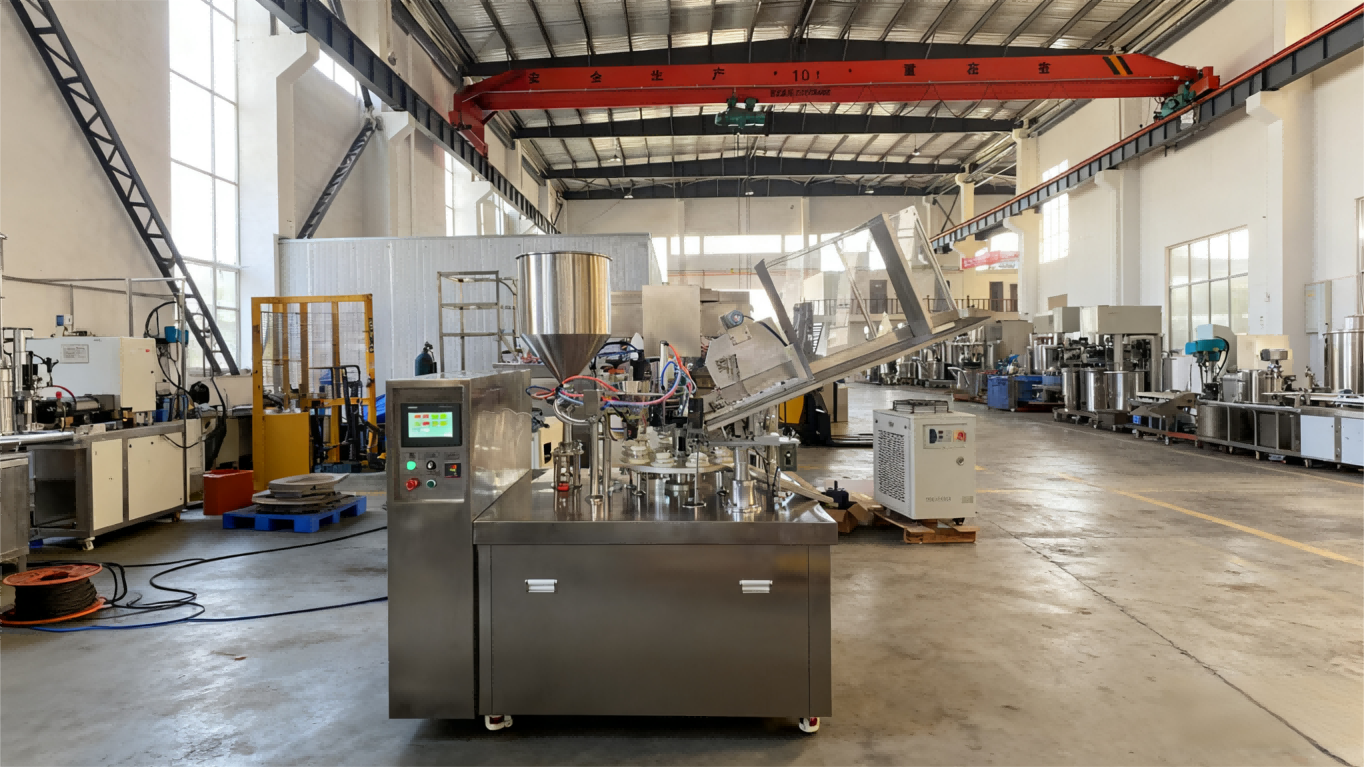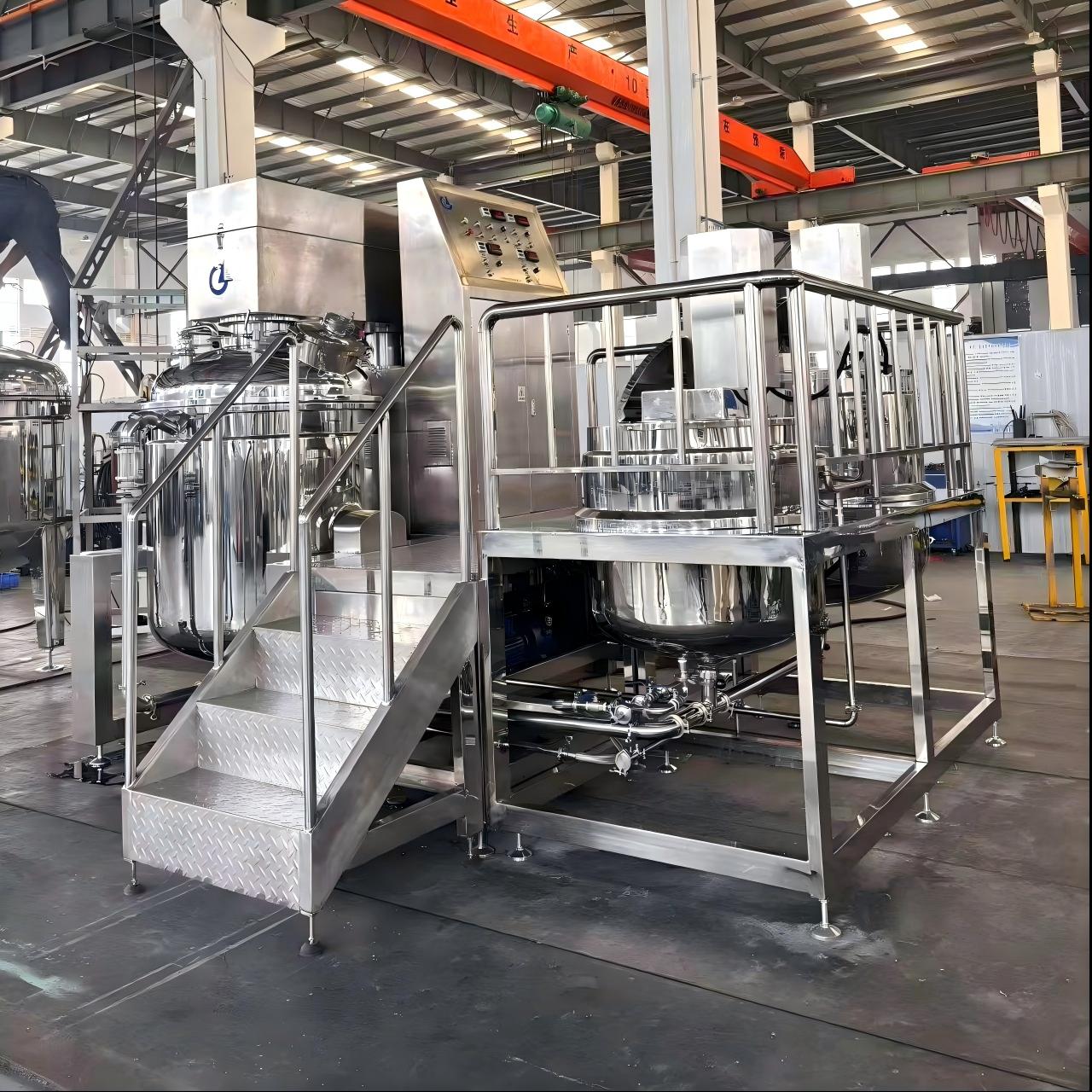Why Is Temperature Control Critical for Vacuum Emulsifiers in Face Cream Production?
Controlling the temperature of a vacuum emulsifying mixer during face cream production is critical—this process directly impacts product quality, safety, and production efficiency. Below is a detailed breakdown of its key importance:

1. Preserves Ingredient Stability & Efficacy
Face cream formulas rely on diverse temperature-sensitive ingredients, such as:
Active components (e.g., vitamin C, hyaluronic acid): These denature at temperatures above 45°C, losing their moisturizing or anti-aging effects;
Plant oils (e.g., jojoba oil, shea butter): Excessive heat (over 60°C) causes oxidation, leading to rancidity and off-odors;
Emulsifiers (e.g., cetearyl glucoside): Low temperatures (below 30°C) prevent them from fully dissolving, resulting in uneven ingredient distribution.
Precise temperature control ensures these components retain their intended properties, avoiding product functionality loss or safety risks.
2. Maintains Emulsion Stability (Core of Face Cream Quality)
Face creams are oil-in-water (O/W) or water-in-oil (W/O) emulsions—their stability depends entirely on temperature:
If the temperature is too high (exceeding 70°C for most formulas): The oil phase thins excessively, breaking the emulsifier’s ability to bind oil and water, leading to phase separation (e.g., oil floating on top of the cream);
If the temperature is too low (below 50°C for common emulsifiers): The oil and water phases fail to fully blend, resulting in a grainy texture or short shelf life.
By keeping the temperature within the optimal range (typically 55–65°C, depending on the emulsifier), the emulsion remains stable, ensuring the cream doesn’t separate or degrade over time.

3. Ensures Uniform Texture & Consistent User Experience
Temperature directly shapes the final sensory properties of face cream:
Higher temperatures (within the safe range) reduce the viscosity of the mixture, making the cream lighter and more spreadable (ideal for gel-cream textures);
Slightly lower temperatures increase viscosity, creating a richer, thicker texture (suitable for night creams).
More importantly, consistent temperature across the entire batch prevents inconsistencies—e.g., some parts being too thin while others are lumpy—ensuring every jar of cream has the same feel, which is key to meeting consumer expectations.
4. Balances Microbial Safety & Preservative Efficacy
Microbial contamination is a major risk in face cream production (moist, nutrient-rich formulas attract bacteria like Staphylococcus aureus). Temperature control addresses this while protecting preservatives:
A short heat treatment (e.g., 75–80°C for 10–15 minutes, known as “pasteurization”) kills most harmful microorganisms, extending the product’s shelf life;
However, prolonged exposure to temperatures above 85°C denatures preservatives (e.g., phenoxyethanol, ethylhexylglycerin), rendering them ineffective and leaving the cream vulnerable to post-production contamination.
Maintaining the “pasteurization temperature range” strikes a balance between microbial safety and preservative functionality.
5. Optimizes Energy Efficiency & Reduces Costs
Uncontrolled temperature wastes energy and increases operating expenses:
Overheating the mixer (e.g., raising temperature to 90°C when 65°C is sufficient) consumes extra electricity and requires more cooling energy to bring it back to the optimal range;
Underheating leads to rework (e.g., remelting the mixture to fix emulsification issues), which doubles energy usage and extends production time.
Precise temperature control—using sensors and automated adjustments—ensures the mixer only uses the energy needed, cutting overall production costs by 10–15% (based on typical cosmetic manufacturing data).
In summary, temperature control of the vacuum emulsifying mixer is not just a “process step”—it’s the foundation of high-quality face cream production. Without it, formulas may lose efficacy, emulsions may separate, textures may be inconsistent, and safety or cost issues may arise. By strictly managing temperature, manufacturers can produce face creams that meet both industry quality standards and consumer demands for safety, efficacy, and sensory experience.
News
- Latest News
- Solutions
- FAQ
Recommend Products
-
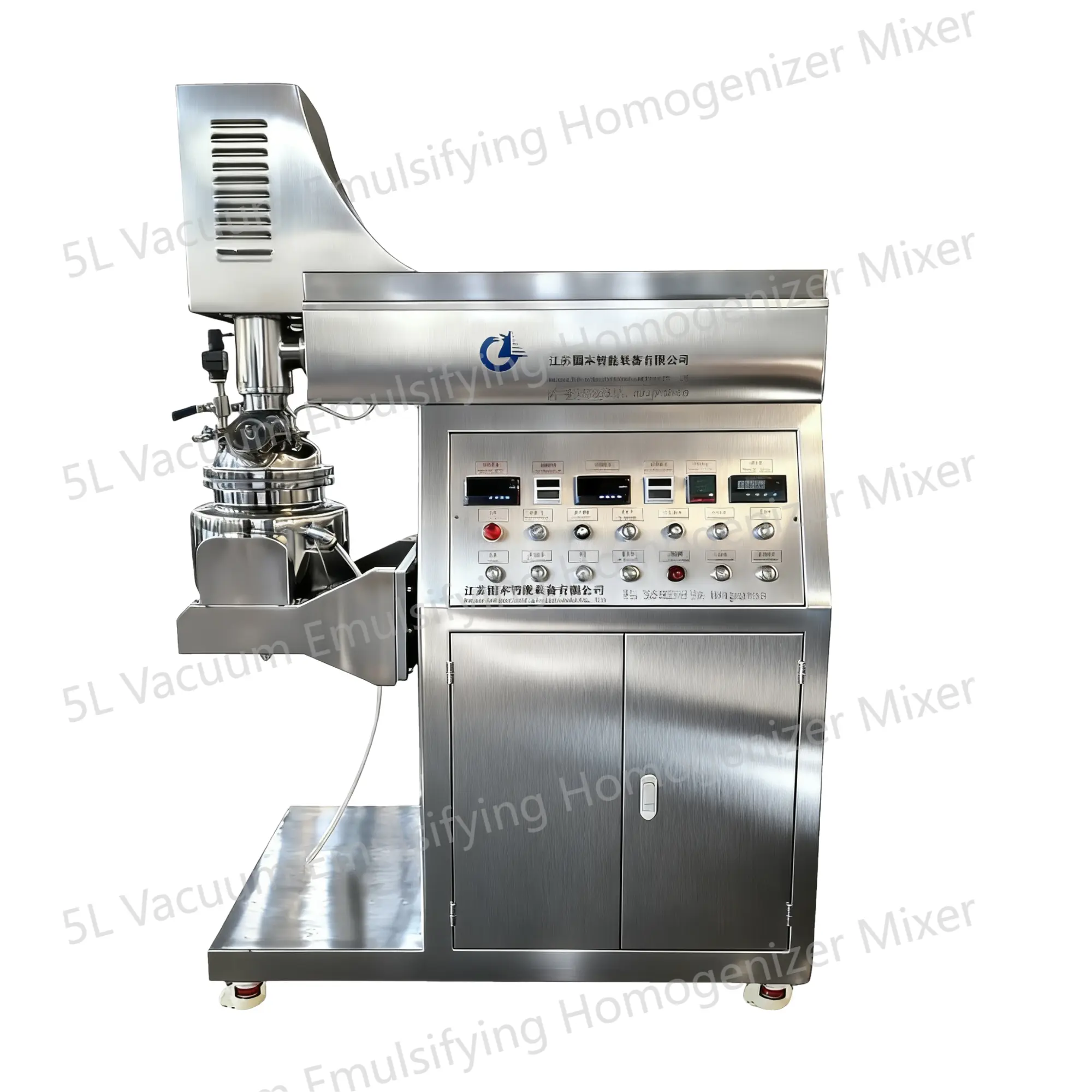 5L Vacuum Emulsifying Homogenizer Mixer
5L Vacuum Emulsifying Homogenizer MixerThe 5L vacuum emulsifying mixer is a device designed for emulsifying and mixing various substances in a vacuum environment. This equipment is equipped with a mixing tank with a capacity of 5 liters and is widely applied in industries such as food, pharmaceuticals, cosmetics, and pesticides.
-
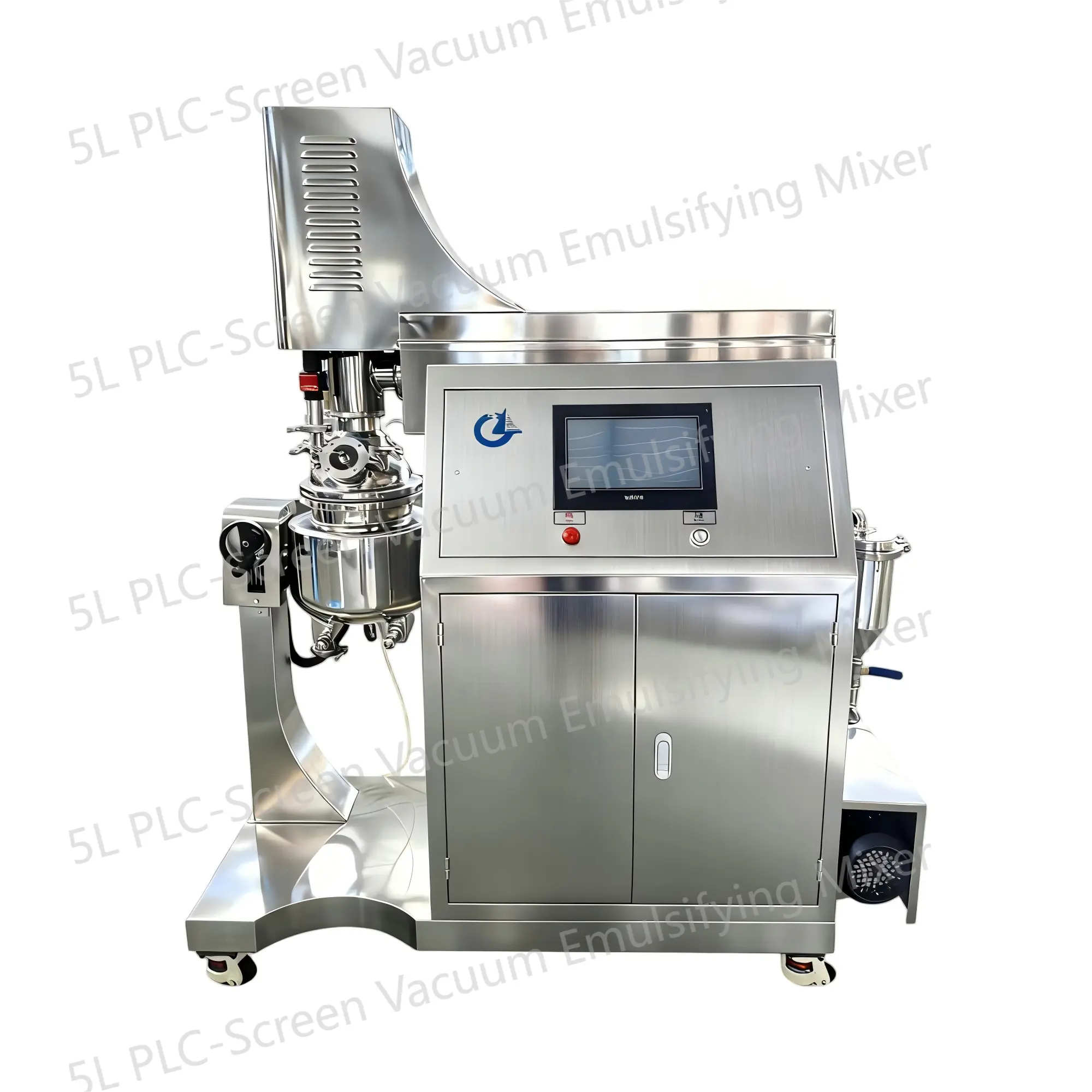 5L PLC-Screen Vacuum Emulsifying Mixer
5L PLC-Screen Vacuum Emulsifying MixerThe 5L PLC-Screen Vacuum Emulsifying Mixer is a device designed for emulsifying and mixing various substances in a vacuum environment. This equipment is equipped with a mixing tank with a capacity of 5 liters and is widely applied in industries such as food, pharmaceuticals, cosmetics, and pesticides.
-
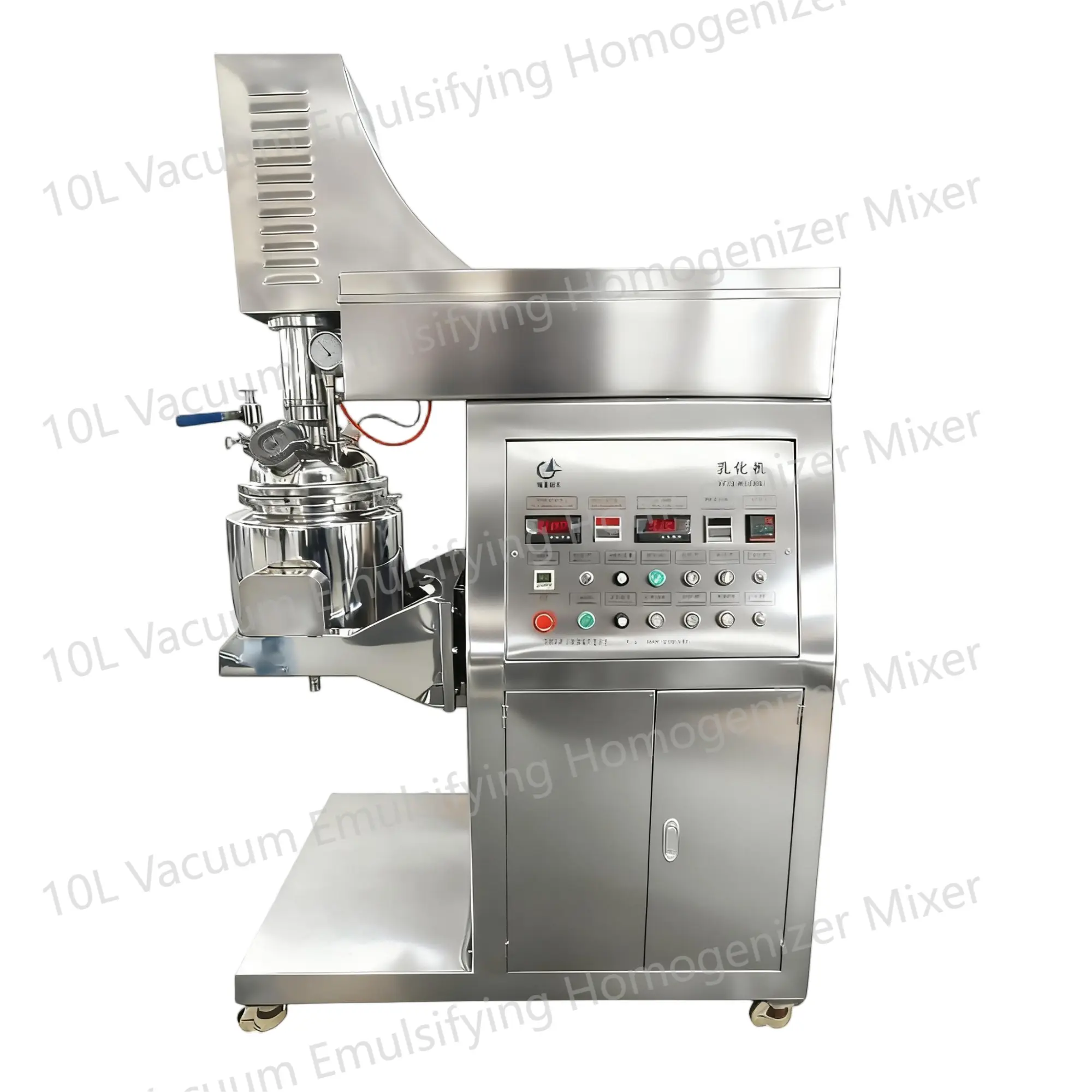 10L Vacuum Emulsifying Homogenizer Mixer
10L Vacuum Emulsifying Homogenizer MixerThe 10L Vacuum Emulsifying Mixer is a device used for emulsifying and mixing various substances in a vacuum environment. It is commonly used in industries such as food, cosmetics, and pharmaceuticals.


 English
English Russian
Russian French
French Spanish
Spanish Portuguese
Portuguese Korean
Korean Japanese
Japanese Thai
Thai
